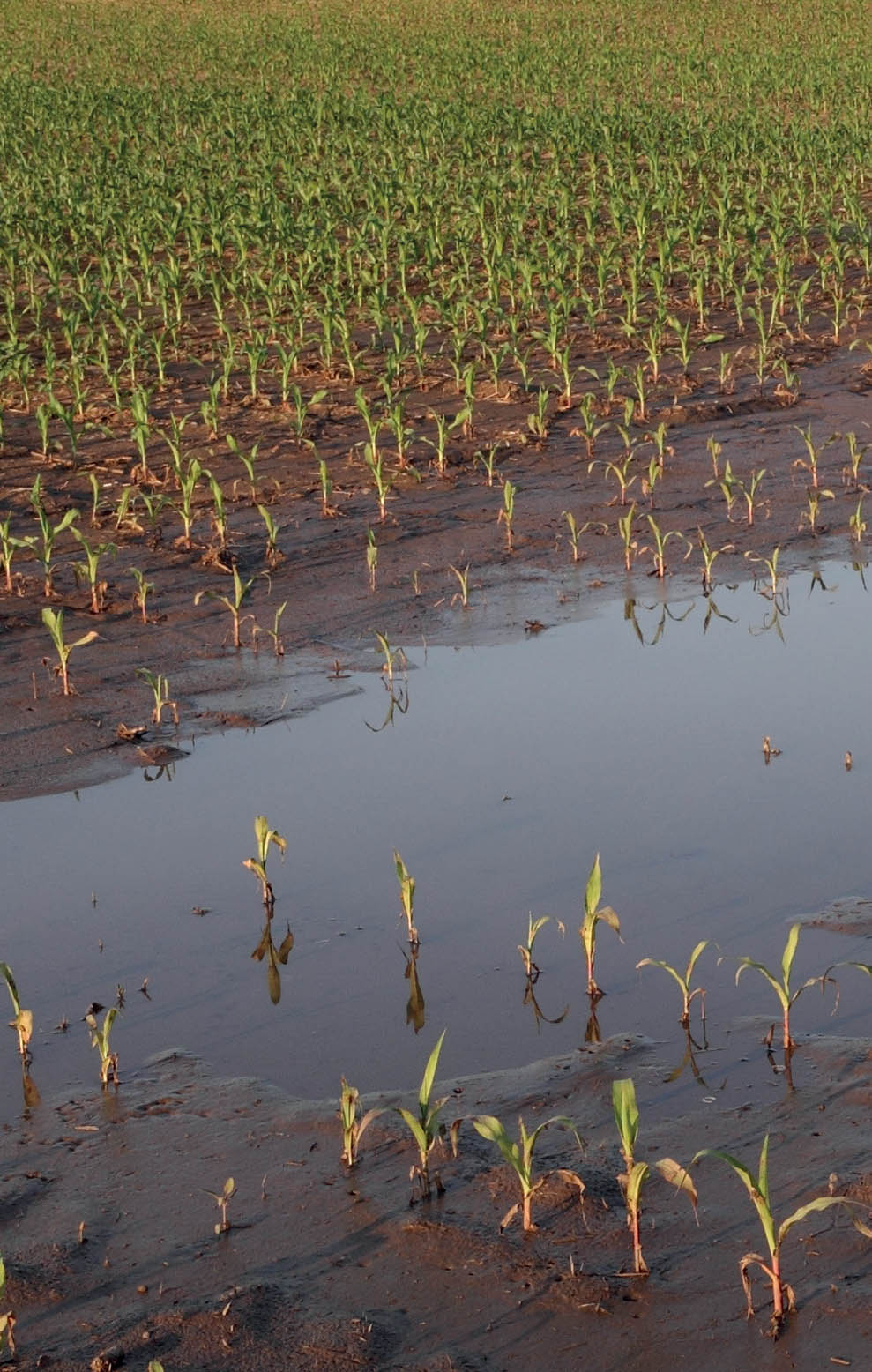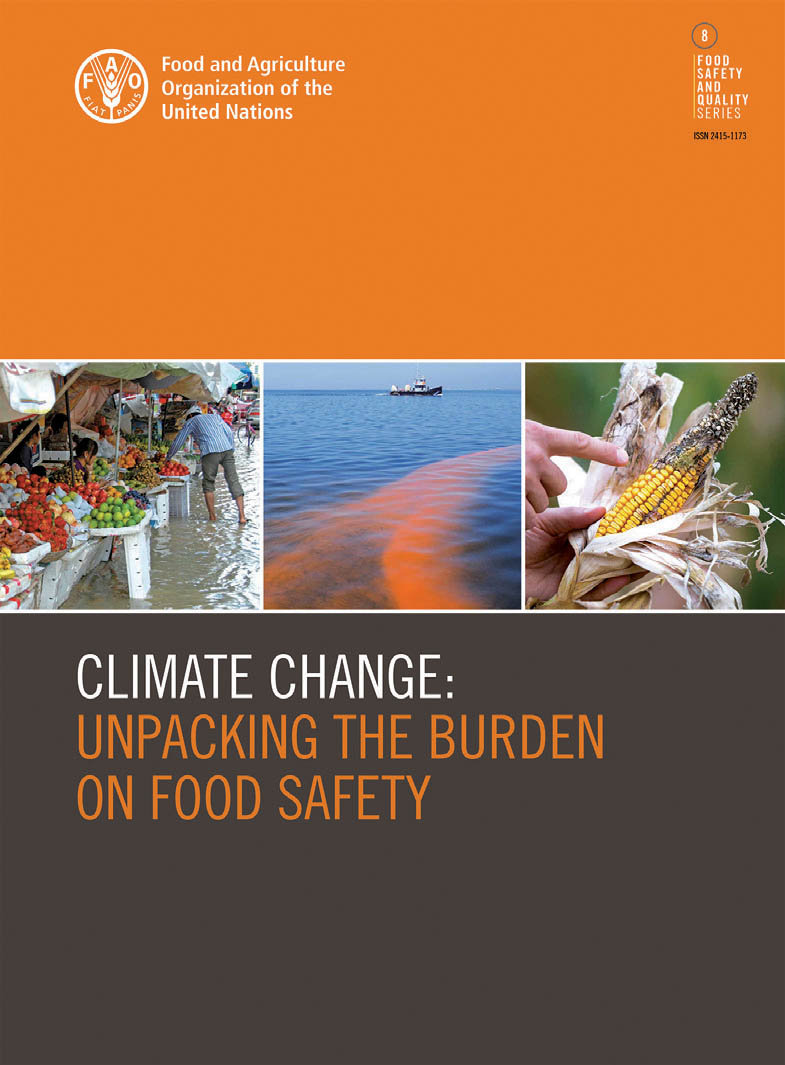

©Shutterstock/sima
That human activities have had a significant influence on climate change is undeniable. This has led to widespread changes in the atmosphere, ocean, biosphere and cryosphere. Some of these changes are not only occurring on an unprecedented scale but are also expected to be irreversible for centuries to millennia, especially in terms of the impacts on the ocean, global sea level rise and melting of the ice sheets (IPCC, 2021). It is suggested that global warming has impacted 80 percent of the world’s land area where approximately 85 percent of the global population reside (Callaghan et al., 2021).
Based on recent national climate action plans (or nationally determined contributions) submitted by various countries, global warming is expected to exceed by more than 2.7 °C by the end of the century (IPCC, 2021; UNEP, 2021; UNFCCC, 2021). Limiting human-induced global warming requires strong reductions in GHG emissions with the IPCC Sixth Assessment Report (2021) suggesting that meeting the aspirational Paris Agreement goal of limiting global warming to 1.5 °C will be extremely difficult unless far reaching measures to decarbonize the global economy are taken (IPCC, 2021). One of the key developments at the recent Conferences of the Parties (COP26) summit was a historic commitment to curb emissions of methane,2 the Global Methane Pledge, which was signed by 103 countries (UN Climate Change, 2021a).
At present, with global temperatures 1.2 °C warmer than pre-industrial temperatures, climate change is already exacerbating a series of extreme events – heatwaves, droughts, wildfires, hurricanes and floods – in different parts of the world, causing unparalleled losses to ecosystems, economies and lives.
What are the climate change impacts on food safety?
Extreme events attributed to climate change are becoming more frequent, severe and unpredictable. Such events not only impact food security by adversely affecting agricultural production and yield, and disrupting supply chains, but they also affect food safety. Elevated temperatures, alternation of severe drought periods and heavy rains, soil quality degradation, rising sea levels and ocean acidification, among others, have serious implications for various biological and chemical contaminants in food by altering their virulence, occurrence and distribution. This increases our risk of exposure to foodborne hazards. In addition, rapid globalization of the food supply chains facilitates amplification of foodborne hazards along the way providing opportunities for local foodborne incidents to become international outbreaks.
Unsafe food is unfit for consumption. With sufficient, affordable, nutritious and safe food considered the key components of food security, climate change impacts on food safety will hamper our efforts to achieve food security in the face of a rising global population and an increasing demand for food. According to estimates, about 14 percent of food produced is lost during the production stage before it even reaches the retail level or the consumers. Part of this enormous loss is due to various food contamination issues (FAO, 2019) and climate change can exacerbate food loss by providing conditions conducive for the occurrence and dissemination of foodborne hazards.
In 2008, FAO published a pioneering report entitled Climate change: Implications for food safety, which provided a broad overview of the various effects of climate change on the food safety landscape. Subsequently, in recognition of the growing body of scientific evidence linking climate change to the various foodborne hazards that can enter the food chain FAO released a publication, Climate change: Unpacking the burden on food safety in 2020. By drawing on both publications, the climate impacts on a few select foodborne hazards – foodborne pathogens, algal blooms and mycotoxins – are briefly described below.
Changes in temperatures and precipitation are affecting the geographic distribution and persistence of foodborne pathogens. Higher incidences of infections by several pathogens like Salmonella spp. and Campylobacter spp. in different parts of the world can be linked to increasing temperatures (Kuhn et al., 2020; Lake, 2017). Frequent and severe hurricanes cause recurring flooding of croplands facilitating the distribution of pathogens in the food chain (Box 2).
Box 2. Shifting water availability impacts global food safety
Water is a crucial resource for all humanity. Alternation of the global water cycle is becoming more apparent as temperatures rise and extreme weather events become more frequent, unpredictable and severe due to climate change (UN Climate Change, 2021b). Certain places that were already wet are now prone to more heavy and uneven rainfall, with the IPCC Sixth Assessment Report predicting extreme rainfall to intensify by 7 percent for each additional 1 °C of global warming (IPCC, 2021). Some regions already water-stressed now experience unprecedented drought conditions, with research suggesting the populations facing acute water shortages may double by the late twenty-first century (Pokhrel et al., 2021; UN Climate Change, 2021b). Moreover, there is a recognizable pattern of consecutive occurrence of extended droughts followed by extreme rainfall in the same area within a short time period, especially in the mid-latitude regions (He and Sheffield, 2020).
Recurrent droughts, excessive rainfall, sea level rise and other climate-change-induced situations that affect fresh water availability all have major impacts on agriculture and can jeopardize global food security as well as the achievement of several Sustainable Development Goals (SDGs) (FAO, IFAD, UNICEF, WFP and WHO, 2021). This challenge is expected to become more pressing as climate change conditions intensify together with rising global populations and concomitant growing demands for food.
In addition to food security, water availability also poses risks for food safety (FAO, 2020). Growing water scarcity is a major issue for the food industry as it creates competition with other sectors that are also water application-intensive. If not adequately prepared for, water scarcity may compromise hygienic conditions in food processing plants by affecting water usage patterns, such as for sanitizing equipment, and impact transmission of foodborne pathogens such as Listeria monocytogenes (Chersich et al., 2018). As recycling of wastewater gains more attention amid water shortages, it is important to apply strict monitoring measures to ensure that the water meets the safety requirements for intended reuse applications. During extreme events, such as hurricanes, flooding can contaminate entire water supplies and reduce access to safe drinking water. It can also increase the risk of outbreaks of waterborne diseases like cholera (caused by Vibrio cholerae) by overwhelming public infrastructure for hygiene and sanitation. Inundation of agricultural fields may expose crops to pathogenic microorganisms and chemical contaminants such as heavy metals. In addition, toxin-producing mould may develop on crops as a result of exposure to water (FAO, 2020). Excessive rainfall can lead to runoffs which can pick up various chemical hazards and contaminate waterbodies by draining into them. For instance, fertilizers from agricultural fields can get washed into water systems promoting growth of toxic algal bloom
Recent evidence points to a potential association between rising temperatures and increased rates of antimicrobial resistance in human pathogens (Escherichia coli, Klebsiella pneumonia and Staphylococcus aureus) (MacFadden et al., 2018; McGough et al., 2020). In a worrying trend, various food- and waterborne pathogens – Vibrio cholerae, Campylobacter spp., Listeria monocytogenes, Salmonella spp, Escherichia coli, and Arcobacter sp. – are increasingly showing resistance to clinically important antibiotics, underscoring the importance of monitoring this issue (Dengo-Baloi et al., 2017; Elmali and Can, 2017; Henderson et al., 2017; Olaimat et al., 2018; Poirel et al., 2018; Van Puyvelde et al., 2019; Wang et al., 2014; Wang et al., 2019).
The increase in the frequency and duration of harmful algal blooms along coastlines and in lakes globally can be attributed to a combination of eutrophication, intense precipitation, warmer temperatures, and ocean acidification, among other factors. While algae are a natural component of the aquatic ecosystem, algal blooms can block sunlight from other marine plants and animals. When the algae die, the decomposition process can cause “dead” or hypoxic zones that cannot support aquatic life. Certain algal species also produce toxins that can bioaccumulate in fish and shellfish and induce toxic syndromes in humans when consumed. Among others, ciguatera poisoning is caused by ciguatoxins, which are produced by dinoflagellates of the genera Gambierdiscus and Fukuyoa. Ciguatera poisoning is a major foodborne issue in the Pacific region, affecting the entire aquatic food chain (FAO and WHO, 2020).
Mycotoxins are toxic metabolites produced by various fungi that contaminate staple and cash crops (maize, rice, groundnuts, sorghum and so on). Factors – temperature, relative humidity and crop damage by pests – that influence both the susceptibility of plants to fungal infections as well as the production of mycotoxins, are affected by climate change. With cooler temperate zones becoming warmer and more conducive to agriculture, they are opening up new habitats for agricultural pests and toxic fungal species. For instance, aflatoxins, which were traditionally considered a problem mainly in tropical areas (such as in some parts of Africa), are now quite established in other geographical zones and regions (such as in the Mediterranean) (Chhaya, O’Brien and Cummins, 2021). Inadequate postharvest practices for drying, storage and transportation can exacerbate the risk of exposure to mycotoxins, such as aflatoxins and ochratoxin A.
For some of these foodborne hazards, such as mycotoxins and algal toxins, there are rising incidences in areas with no prior history of these foodborne illnesses. This puts the affected areas at a disadvantage as there may be insufficient surveillance systems and management measures put in place to detect and manage the outbreaks, thus putting public health at risk. Moreover, foodborne illnesses are usually underreported, which makes it challenging to estimate the true foodborne disease burden.
What is the way forward?
It is important to ensure that food supply chains and regulatory systems are better prepared to adapt to the growing climate change impacts on food safety. Widespread early warning systems and robust monitoring and surveillance measures are important elements for preventing and controlling foodborne outbreaks, especially in countries more climate-vulnerable than others. The success of these systems ultimately depends on effective information dissemination and transparency in data sharing with all relevant partners. However, the effectiveness of such systems is highly dependent on capacities for collecting and analysing information on climate impacts, and there is currently inadequate research on climate impacts from areas that stand to bear the greater brunt of climate impacts (Callaghan et al., 2021). This “attribution gap” will need to be addressed by increasing the capacity and funding for research in the more climate-vulnerable countries.

Integrating structured foresight systems would allow a more forward-looking approach to food safety that would complement monitoring and surveillance measures. Foresight approaches would help to identify and address emerging food safety concerns exacerbated by climate change. To bring the future of food to reality, a proactive approach rather than a reactive response to climate impacts will be needed. Along with preparedness, traceability along supply chains, as facilitated by digital innovations, will play an important role in keeping our food safe by tracking and removing contaminated food products before they become a public health issue.
Since climate change impacts on the global food safety is multidisciplinary by nature, this implies a unified response to the growing challenges, and an integrated and cross-sectoral approach is needed. Greater engagement among local, national and global efforts that harness expertise and resources across multiple sectors of environment, agriculture and health, in other words, a One Health approach to food safety issues, will need to be the norm in the face of climate change. Transformation of the agrifood systems will require greater emphasis on the connections across the various disciplines of the food system, which includes food safety, with an existential threat like climate change, as reiterated at the 2021 United Nations Food Systems Summit 3
“Change of climate (global temperatures, precipitations, wind patterns and other measures of climate) that is attributed directly or indirectly to human activity that alters the composition of the global atmosphere and that is in addition to natural climate variability observed over comparable time periods”
United Nations Framework Convention on Climate Change (UNFCCC), 1992

